Do I Need a Hair System?
Hair Systems - What can they Do for You?
A hair system, also known as a hairpiece or toupee, is typically used as a non-surgical solution for individuals who are experiencing hair loss or baldness. There are many reasons why someone may choose to use a hair system, including:
- Cosmetic reasons: A hair system can help improve a person's appearance and boost their confidence, especially if they are self-conscious about their hair loss.
- Medical conditions: Hair loss can be caused by various medical conditions, such as alopecia or cancer treatment, and a hair system can provide a temporary or permanent solution.
- Genetic predisposition: Male and female pattern baldness is a common genetic trait that affects many individuals, and a hair system can provide a solution for those who wish to conceal their hair loss.
- Lifestyle reasons: Some individuals may choose to use a hair system for their profession, such as actors or models, where appearance is important.
Hair systems are available in various types and materials, including synthetic or human hair, and can be customized to match the individual's natural hair color, texture, and style. While a hair system can provide a temporary or permanent solution for hair loss, it's important to consider the maintenance and upkeep required to ensure its longevity and natural appearance. It's recommended to consult with a qualified hair restoration specialist to determine the best approach for your individual situation.
Who Needs a Hair System?
Here are some examples of who may benefit from a hair system:
- Individuals with genetic hair loss: Male and female pattern baldness are common conditions that can lead to hair loss. A hair system can help these individuals regain their confidence and achieve a more youthful appearance.
- Cancer patients: Chemotherapy and radiation can cause hair loss, and a hair system can be a practical solution for those undergoing cancer treatment.
- Alopecia sufferers: Alopecia is an autoimmune disease that can cause hair loss. A hair system can provide a natural-looking solution for those who are experiencing hair thinning or baldness.
- Individuals with medical conditions: Certain medical conditions, such as thyroid disorders or lupus, can cause hair loss. A hair system can help individuals with these conditions achieve a more natural look.
- Actors, performers, and models: Hair systems can help these professionals achieve the desired look for a role or performance, especially if they require a certain hairstyle or hair color.
- Individuals who want a change in hairstyle: Hair systems can provide a temporary change in hairstyle without committing to a permanent change.
In short, anyone who wants to improve their appearance, confidence, or self-esteem by enhancing their hair may benefit from a hair system.

How to Choose a Hair System
Choosing a hair system can be a personal and sometimes overwhelming process. Here are some tips to help you choose the right hair system:
- Determine your budget: Hair systems can vary in price, so it's essential to establish your budget before you start shopping.
- Consider the material: Hair systems can be made from different materials, such as synthetic or human hair. Synthetic hair systems are typically less expensive, but human hair systems provide a more natural look and feel. Lordhair only provides human hair systems as they are the most realistic out there, and we know you value highly how realistic your toupee looks.

- Look for a reputable supplier: Choose a supplier with a good reputation and customer reviews, so you can ensure that you're getting a high-quality hair system.
Lordhair has been serving men with hair loss for over 15 years and is one of the largest online retailers, so you are in safe hands when ordering with Lordhair.
- Select the right hair color: Choose a hair color that matches your natural hair or the desired shade you want to achieve. Avoid the bad toupee look.
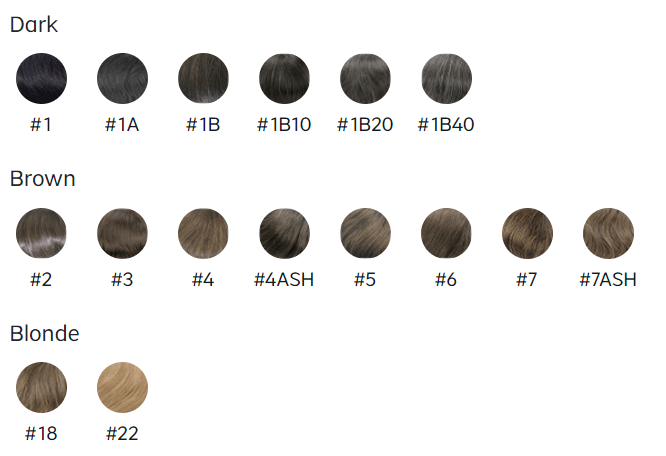
- Determine the hair density: Hair density refers to the amount of hair on the hair system. Choose a hair density that looks natural and suits your preferences.
- Choose the right base: Hair systems have different types of bases, such as lace systems, skin systems, or mono systems. The choice of the base will depend on your lifestyle, desired hairstyle, and level of comfort.
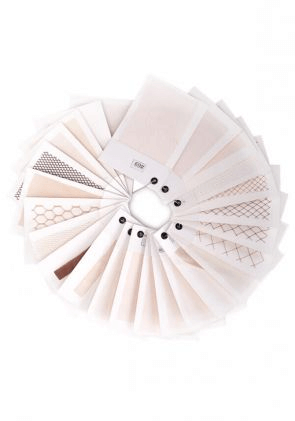
- Get a proper fit: It's essential to get a hair system that fits well and feels comfortable. Measure your head or get professionally measured to ensure the hair system fits correctly.
- Consider hair system maintenance: Depending on the type of hair system, it may require more or less maintenance. Choose a hair system that fits your lifestyle and maintenance requirements.
In conclusion, choosing a hair system requires careful consideration and research. By following these tips, you can find a hair system that meets your needs, looks natural, and feels comfortable.
Types of Hair Systems for Men
There are several types of hair systems for men, including:
- Full-cap hair system: This type of hair system covers the entire scalp and is ideal for those with complete hair loss.
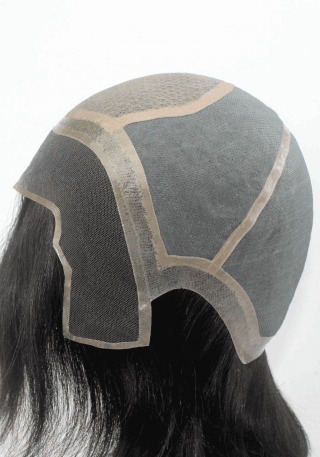
- Partial hair system: This type of hair system covers only a portion of the scalp, such as the crown or the front hairline.
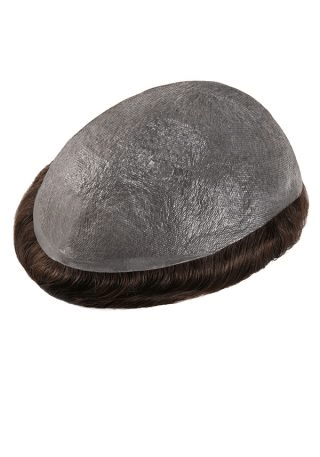
- Lace hair system: This type of hair system uses a thin lace base that is attached to the scalp using adhesive. It provides a natural-looking hairline and is lightweight.
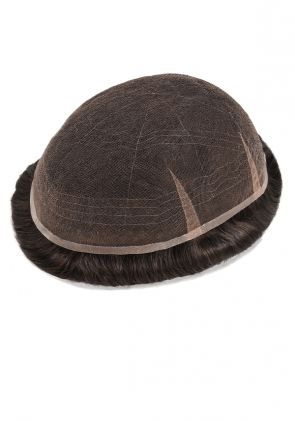
- Skin hair system: This type of hair system uses a thin layer of skin-colored material that is attached to the scalp using adhesive. It provides a natural-looking scalp and is easy to maintain.
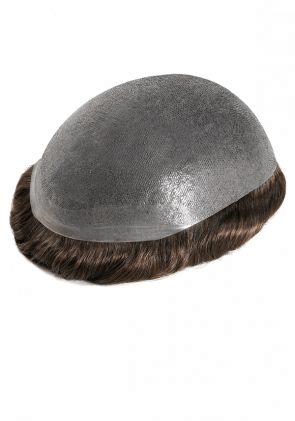
- Mono hair system: This type of hair system uses a fine mesh material that is attached to the scalp using adhesive. It provides a natural-looking scalp and is more durable than lace hair systems.
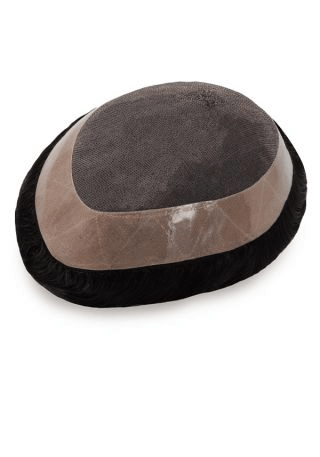
- Hybrid hair system: This type of hair system combines different materials, such as lace and skin, to provide a natural-looking scalp and hairline.
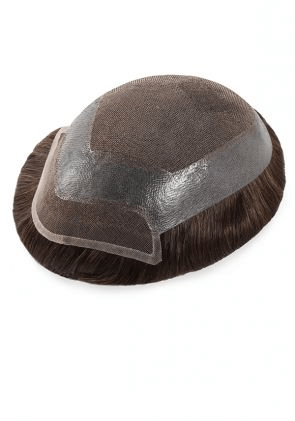
- Custom hair system: This type of hair system is made to the exact specifications of the wearer, including hair color, hair density, and base material.

In conclusion, there are various types of hair systems available for men, and choosing the right one will depend on individual preferences, hair loss severity, lifestyle, and budget. A consultation with a reputable hair system supplier or a hair replacement specialist can help determine the best type of hair system for you.
What are the solutions to hair loss?
There are various methods for hair loss solutions. Here are some common ones and how they compare to each other:
- Medications: Medications such as minoxidil and finasteride are often used to treat hair loss. Minoxidil is a topical medication that is applied to the scalp, while finasteride is taken orally. Minoxidil has been shown to promote hair growth, while finasteride works by blocking the production of the hormone that causes hair loss. These medications can be effective, but they often require long-term use and can have side effects.
- Hair Transplantation: Hair transplantation is a surgical procedure in which hair follicles are taken from areas of the scalp where hair is still growing and transplanted to areas where hair is thinning or balding. This method can be expensive and requires a skilled surgeon. The results can be permanent, but there is a risk of scarring and infection.
- Laser Therapy: Low-level laser therapy (LLLT) is a non-invasive treatment that uses light energy to stimulate hair growth. It is believed to work by increasing blood flow to the hair follicles and promoting cell growth. This treatment can be done in a clinic or at home using a handheld device. While some studies have shown that LLLT can be effective in treating hair loss, the results can be variable, and the treatment can be costly.
- Scalp Micropigmentation: Scalp micropigmentation (SMP) is a non-surgical cosmetic procedure that involves tattooing the scalp to create the appearance of hair. This method is often used to create the appearance of a shaved head or to camouflage areas of baldness. The results can be long-lasting, but the procedure can be expensive, and there is a risk of infection and scarring.
- Wigs and Hairpieces: Wigs and hairpieces can be a quick and easy solution for those experiencing hair loss. They can be made from synthetic or human hair and can be custom-fitted to the wearer's head. While they can provide a natural-looking solution, they can be uncomfortable and require regular maintenance.
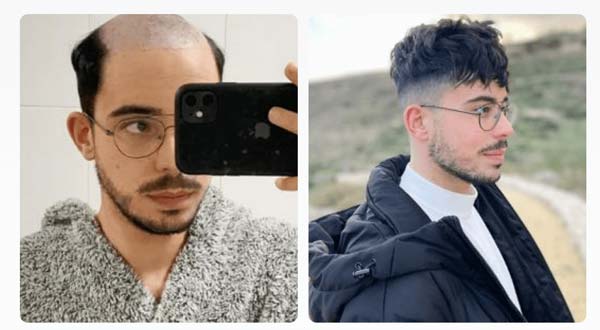
Overall, each method of hair loss solution has its advantages and disadvantages. It's important to consult with a medical professional to determine which method is best for your individual needs and preferences.
Let’s have a look at each of these in detail and compare how they match up to using a men’s toupee or women’s wig.
Non Surgical Hair Replacement VS Surgical Hair Replacement
Hair loss is a common issue that affects millions of people worldwide, with a range of causes including genetics, aging, illness, and stress. Many people who experience hair loss seek treatment to restore their hair, and there are several options available, including surgical and non-surgical hair replacement.
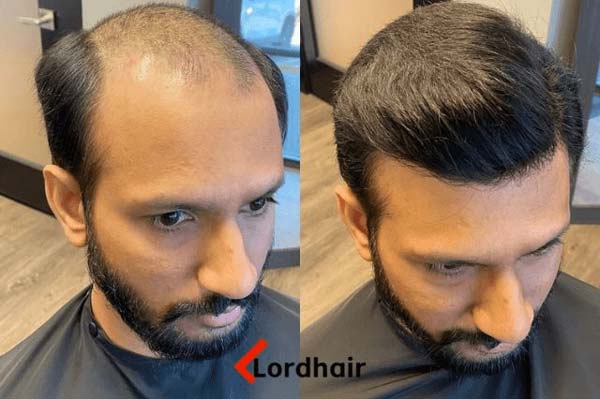
Non-surgical hair replacement involves the use of hair systems or hairpieces to cover areas of hair loss. These systems are made from human or synthetic hair and are attached to the scalp using various methods, such as clips, adhesives, or tapes. Non-surgical hair replacement is a popular choice for those who do not want to undergo surgery or those who are not suitable candidates for surgery. It can be done quickly and is usually less expensive than surgical hair replacement.
One of the main benefits of non-surgical hair replacement is that it does not involve any invasive procedures or downtime, and the results are instant. Hair systems are designed to blend seamlessly with natural hair, creating a natural-looking appearance that can boost confidence and self-esteem. Hair systems are also versatile, and wearers can style their hair as they please without worrying about damaging the hairpiece.
On the other hand, surgical hair replacement involves the transplantation of hair follicles from a donor area to the area of hair loss. This is done through a procedure called hair transplantation or hair restoration surgery. Hair transplantation is a more permanent solution than non-surgical hair replacement, and the results can be long-lasting.
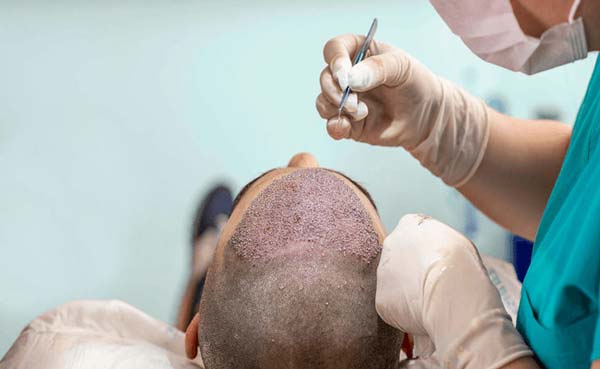
One of the main benefits of surgical hair replacement is that it is a one-time procedure, and the results can be significant. Hair transplantation can restore a full head of hair, and the transplanted hair will grow naturally, providing a permanent solution to hair loss. Hair transplantation is also a safe and effective procedure that has been performed for several decades.
However, hair transplantation is a surgical procedure that involves some risks and potential side effects, such as infection, bleeding, and scarring. The recovery time after hair transplantation can also be significant, with patients needing to avoid strenuous activity and follow specific aftercare instructions to ensure proper healing.
Let’s compare the different types of invasive, surgical methods to hair systems.
Men’s Toupees VS Hair Transplants
Hair loss is a common issue that affects many men, and there are several options available for restoring hair, including toupees and hair transplants. While both options can provide a natural-looking solution to hair loss, they differ in terms of cost, durability, and maintenance.
Men's toupees, also known as hair systems or hairpieces, are a non-surgical solution to hair loss. They are made from synthetic or human hair and are attached to the scalp using adhesives or tapes. Toupees come in various styles, colors, and textures to match the wearer's natural hair, and they can be custom-fit to ensure a seamless and natural-looking appearance.
One of the main benefits of toupees is that they are a quick and relatively affordable solution to hair loss. They can be fitted and styled in a matter of hours, and they do not require any surgical procedures or downtime. Toupees also provide flexibility in terms of styling, allowing the wearer to achieve different looks and styles as they please.
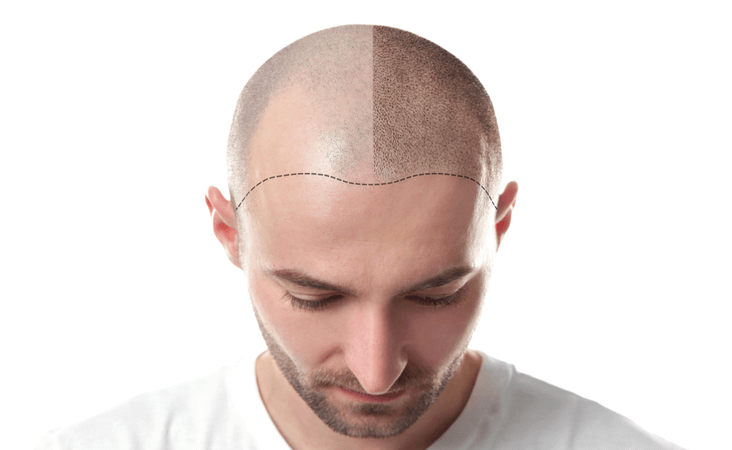
On the other hand, hair transplants involve the surgical transplantation of hair follicles from a donor area to the area of hair loss. The transplanted hair follicles grow naturally, providing a long-lasting and permanent solution to hair loss. Hair transplants can be performed using various techniques, such as Follicular Unit Extraction (FUE) or Follicular Unit Transplantation (FUT).
One of the main benefits of hair transplants is that they provide a permanent solution to hair loss, and the results are natural-looking and durable. Hair transplants require a skilled surgeon and can be costly, but they offer a long-term investment in the restoration of hair.
In terms of maintenance, toupees require regular cleaning and upkeep, and they need to be replaced every few months or years, depending on the quality and type of hair system. Hair transplants require little maintenance, and the transplanted hair grows and behaves like natural hair, requiring the same care and attention.
In conclusion, both toupees and hair transplants can be effective solutions to hair loss, but they differ in terms of cost, durability, and maintenance. While toupees are a quick and affordable solution that provides flexibility in styling, hair transplants offer a permanent and natural-looking solution that requires little maintenance. It's important to consult with a qualified professional to determine the most suitable option based on individual needs, preferences, and budget.
Comparison of Types of Non-Surgical Hair Loss Solution
There are several types of non-surgical hair loss solutions available on the market today. Here is a comparison of some of the most popular options:
- Topical treatments: These include products such as minoxidil and finasteride, which are applied directly to the scalp to stimulate hair growth. They are often used in combination for better results. Topical treatments can be effective for some individuals, but they require consistent use and may have side effects.

- Hair fibers: These are tiny fibers made from keratin that are sprinkled onto the scalp to give the appearance of thicker hair. They can be a quick and easy solution, but they may not be effective for individuals with severe hair loss or those who are completely bald.
- Hair systems: Also known as hairpieces or wigs, these are custom-made hairpieces that are attached to the scalp with adhesive or clips. They can provide a natural-looking solution for individuals with moderate to severe hair loss, but they require ongoing maintenance.
- Scalp micropigmentation: This is a non-invasive procedure in which pigments are tattooed onto the scalp to create the appearance of hair follicles. It can be a good solution for individuals who want to achieve the look of a closely shaved head, but it may not be effective for those with significant scarring or other scalp issues.
- Low-level laser therapy: This involves the use of specialized laser devices that emit low-level light onto the scalp to stimulate hair growth. It can be effective for some individuals, but it requires consistent use and may take several months to see results.
Men’s Hair Systems VS Medication
Men's hair systems, also known as hairpieces or wigs, and medication, such as minoxidil and finasteride, are two different approaches to dealing with hair loss in men. Here's a comparison between the two:
- Men's hair systems: These are custom-made hairpieces that are attached to the scalp with adhesive or clips. They are designed to match the color, texture, and density of your natural hair and can be a good solution for individuals with moderate to severe hair loss. Hair systems provide an instant result and are easy to maintain. However, they require regular maintenance, such as cleaning, styling, and re-attachment, and can be expensive over time.
- Medication: Medications like minoxidil and finasteride are FDA-approved for treating hair loss in men. Minoxidil is a topical treatment that stimulates hair growth, while finasteride is an oral medication that works by blocking the hormone responsible for hair loss. Both medications require consistent use to maintain their effectiveness and can take several months to show results. They are often used in combination for better results.

The choice between men's hair systems and medication will depend on your individual needs and preferences. Men's hair systems are a good solution for individuals who want an immediate, natural-looking result. However, they require ongoing maintenance and can be costly over time. Medication, on the other hand, may take longer to show results but can be effective for some individuals with mild to moderate hair loss. It's important to consult with a qualified hair restoration specialist to determine the best approach for your situation.
Men’s Toupees VS Hair Fibers
Men's toupees and hair fibers are two non-surgical hair loss solutions that can provide a quick and easy way to conceal hair loss. Here's a comparison between the two:
- Men's toupees: Toupees, also known as hairpieces or wigs, are custom-made hair systems that can be attached to the scalp with adhesive or clips. They are designed to match the color, texture, and density of your natural hair and can be a good solution for individuals with moderate to severe hair loss. Toupees provide an instant result and can be styled and maintained like natural hair. However, they require regular maintenance, such as cleaning, styling, and re-attachment, and can be expensive over time.
- Hair fibers: Hair fibers are tiny, natural or synthetic fibers made from keratin that are sprinkled onto the scalp to give the appearance of thicker hair. They are available in a range of colors and can be a quick and easy solution for individuals with mild to moderate hair loss. Hair fibers can provide a natural-looking result, but they may not be effective for individuals with severe hair loss or those who are completely bald. They can also be messy and may require touch-ups throughout the day.
The choice between men's toupees and hair fibers will depend on your individual needs and preferences. Toupees are a good solution for individuals who want an instant, natural-looking result and are willing to invest in regular maintenance. Hair fibers can be a quick and easy solution for individuals with mild to moderate hair loss but may not be effective for those with severe hair loss. It's important to consult with a qualified hair restoration specialist to determine the best approach for your situation.
Hair Replacement VS Scalp Micropigmentation
Hair replacement and scalp micropigmentation are two different approaches to dealing with hair loss.
Hair replacement involves the use of hairpieces or wigs to cover bald or thinning areas of the scalp. These hairpieces can be made from natural or synthetic hair and are designed to blend seamlessly with your natural hair.
Scalp micropigmentation, on the other hand, involves the use of specialized pigments and techniques to create the appearance of a closely shaved scalp. This approach is typically used for men who have significant hair loss or who are completely bald.
Both approaches have their advantages and disadvantages. Hair replacement can provide a more natural-looking solution for individuals who want to cover bald spots or thinning areas. However, hairpieces require ongoing maintenance and can be expensive over time.
Scalp micropigmentation, on the other hand, provides a low-maintenance solution that requires no ongoing upkeep. It can also be a more cost-effective solution in the long run. However, the results of scalp micropigmentation may not look as natural as a hair replacement, and it may not be the best solution for individuals who have significant scarring or other issues with their scalp.
Ultimately, the best approach for hair loss will depend on your individual needs and preferences. It's important to consult with a qualified hair restoration specialist who can help you determine the best approach for your situation.
Toupees for Men VS Low-level laser therapy
Toupees for men and low-level laser therapy are two non-surgical hair loss solutions that work differently. Here's a comparison between the two:
- Toupees for men: Toupees, also known as hairpieces or wigs, are custom-made hair systems that can be attached to the scalp with adhesive or clips. They are designed to match the color, texture, and density of your natural hair and can be a good solution for individuals with moderate to severe hair loss. Toupees provide an instant result and can be styled and maintained like natural hair. However, they require regular maintenance, such as cleaning, styling, and re-attachment, and can be expensive over time.
- Low-level laser therapy: Low-level laser therapy is a non-invasive treatment that involves the use of low-level laser light to stimulate hair growth. The lasers are applied to the scalp using a handheld device and can be done at home or in a clinical setting. The treatment is painless and has no known side effects. It may take several months of consistent use to see results.
The choice between toupees for men and low-level laser therapy will depend on your individual needs and preferences. Toupees provide an instant result and can be a good solution for individuals who want a quick fix. However, they require ongoing maintenance and can be costly over time. Low-level laser therapy may take longer to show results but can be an effective solution for individuals with mild to moderate hair loss. It's important to consult with a qualified hair restoration specialist or healthcare professional to determine the best approach for your situation.
Non-Surgical Hair Replacement VS Natural Remedies
Non-surgical hair replacement and natural remedies are two different approaches to dealing with hair loss. Here's a comparison between the two:
- Non-surgical hair replacement: This approach involves the use of hair systems, also known as hairpieces or wigs, or scalp micropigmentation, a non-invasive procedure that involves tattooing pigments onto the scalp to create the appearance of hair follicles. Hair systems are custom-made to match the color, texture, and density of your natural hair and can be attached to the scalp with adhesive or clips. Scalp micropigmentation can provide the look of a closely shaved head and can be a good solution for individuals who are not candidates for hair transplantation. Non-surgical hair replacement provides an immediate, natural-looking result but requires ongoing maintenance and can be costly over time.
- Natural remedies: This approach involves the use of natural ingredients and methods to stimulate hair growth, such as using essential oils, changing your diet, or massaging the scalp. Natural remedies are often inexpensive and can be done at home, but their effectiveness is not scientifically proven, and they may not work for everyone. They may also take longer to show results than non-surgical hair replacement options.
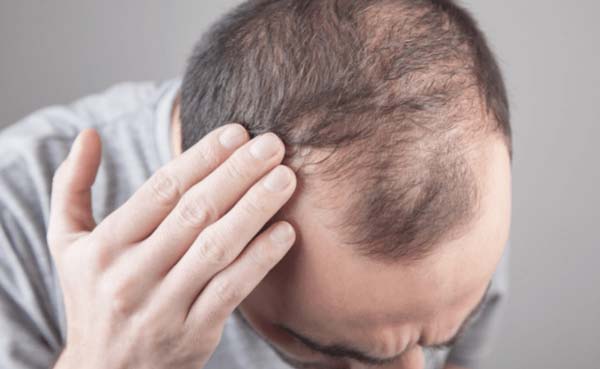
Oil for Hair Loss
Using oil for hair loss is a natural remedy that has been used for centuries. Different types of oil, such as coconut oil, castor oil, and argan oil, are believed to have properties that can help prevent hair loss and promote hair growth. Here are some potential benefits of using oil for hair loss:
- Moisturizing: Oil can help moisturize the scalp, which can help prevent dryness and flakiness. A healthy scalp is essential for healthy hair growth.
- Nourishing: Some oils, such as coconut oil, contain vitamins and minerals that can nourish the hair and scalp, promoting healthy hair growth.
- Strengthening: Some oils, such as castor oil, are believed to have properties that can strengthen the hair shaft, making it less prone to breakage and damage.
- Anti-inflammatory: Some oils, such as tea tree oil, have anti-inflammatory properties that can help reduce inflammation on the scalp, which can contribute to hair loss.
However, it's important to note that the effectiveness of using oil for hair loss is not scientifically proven, and results may vary depending on the individual. It's also important to use oil properly and not overuse it, as excessive use can lead to clogged hair follicles and other scalp problems.
Change Your Diet for Hair Loss
Changing your diet can potentially help with hair loss, as a healthy diet provides the necessary vitamins and minerals that support hair growth. Here are some dietary changes that may help with hair loss:
- Increase protein intake: Hair is made up of protein, so it's important to consume enough protein in your diet. Foods high in protein include meat, fish, eggs, beans, and nuts.
- Add iron-rich foods: Iron is essential for healthy hair growth, and a deficiency in iron can lead to hair loss. Foods high in iron include red meat, poultry, fish, beans, and leafy green vegetables.
- Incorporate foods high in vitamin C: Vitamin C helps the body absorb iron, and it also has antioxidant properties that help protect hair follicles. Foods high in vitamin C include citrus fruits, berries, kiwi, and peppers.

- Consume foods high in omega-3 fatty acids: Omega-3 fatty acids help reduce inflammation, which can contribute to hair loss. Foods high in omega-3s include fatty fish, flaxseed, chia seeds, and walnuts.
- Limit processed foods and sugar: A diet high in processed foods and sugar can lead to inflammation and oxidative stress, which can contribute to hair loss. It's important to consume a balanced diet with whole foods.
While dietary changes can potentially help with hair loss, it's important to note that results may vary depending on the individual and underlying causes of hair loss. It's recommended to consult with a healthcare professional or qualified hair restoration specialist to determine the best approach for your individual situation.
Scalp Massage for Hair Loss
Scalp massage is a natural remedy that has been used for centuries to promote hair growth and prevent hair loss. Here are some potential benefits of scalp massage for hair loss:
- Increases blood flow: Scalp massage can increase blood flow to the hair follicles, which can provide more nutrients and oxygen to support hair growth.
- Relieves tension: Scalp massage can help relieve tension and stress, which can contribute to hair loss. Stress can cause hair follicles to enter the resting phase, leading to hair loss.
- Stimulates hair follicles: Scalp massage can stimulate the hair follicles and promote the production of new hair cells.
- Improves scalp health: Scalp massage can help remove buildup and dead skin cells from the scalp, improving scalp health and promoting healthy hair growth.
To perform a scalp massage, use your fingertips to gently massage your scalp in circular motions, starting at the hairline and working your way back to the nape of your neck. You can also use a scalp massager or a handheld massaging device to make the process easier. It's recommended to massage the scalp for at least 5 minutes a day, and to do it regularly to see the benefits.
While scalp massage can potentially help with hair loss, it's important to note that results may vary depending on the individual and underlying causes of hair loss. It's recommended to consult with a healthcare professional or qualified hair restoration specialist to determine the best approach for your individual situation.
The choice between non-surgical hair replacement and natural remedies will depend on your individual needs and preferences. Non-surgical hair replacement provides an immediate, natural-looking result but requires ongoing maintenance and can be costly over time. Natural remedies are often less expensive but may take longer to show results and may not work for everyone. It's important to consult with a qualified hair restoration specialist or healthcare professional to determine the best approach for your situation.
